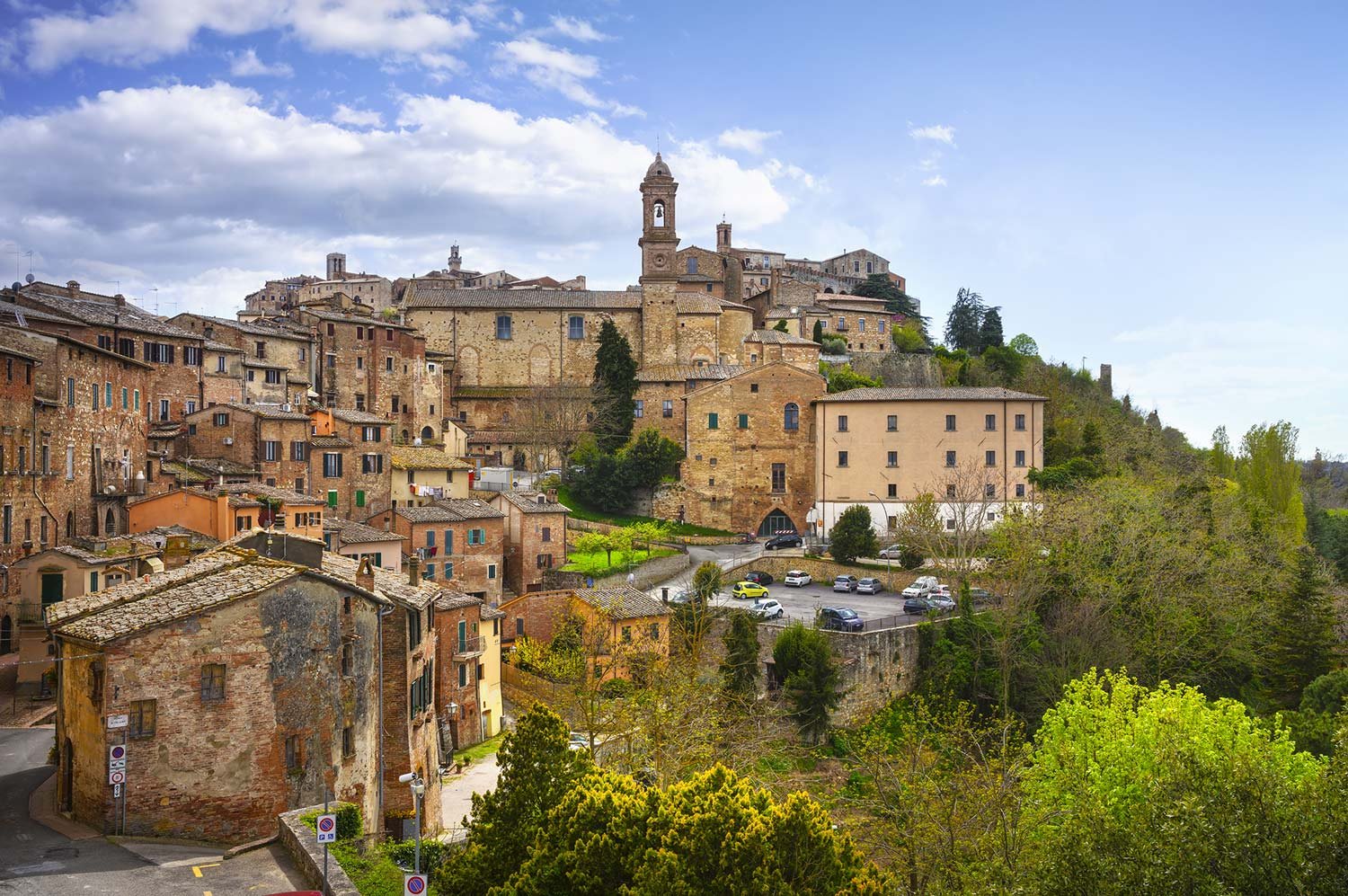Italy > Tuscany > Cantina De’Ricci
TUSCANY
Tuscany, the homeland of the Etruscans, has been settled since the Neolithic. The Etruscans first settled here deep in prehistory and occupied the region between the Arno and the Tiber by the 10th Century BCE. Etruscan civilization, one of the first great civilizations of Italy, reached its technical and artistic peak in the 8-7th Centuries BC. The region was conquered by the Romans in the first Century BC and became part of the core territories of the expanding Republic and then the Empire. Occupied by the Goths as Rome fell, the region grew to become one of the richest and most important regions of Italy during the Middle Ages, and, under the Medici, became the fountainhead of the Italian Renaissance. An independent Grand Duchy through much of the Middle Ages and early Modern period, it was finally incorporated into the newly (re)forming Kingdom of Italy during the Risorgimento in 1861.
The region’s rolling hills have been prime agricultural lands for millenia, and the region is best known for its wines based on variants of the native Sangiovese (blood of Jupiter) grape.
montepulciano
One of Italy’s iconic hilltop villages, Mondepulciano (Monte + Publicianus, Publius’ Mountain) is located at about 2000ft elevation surrounded by vineyards and olive groves. First settled in the 4th-3rd Centuries BC, it later hosted a Roman garrison protecting the region’s important trade routes. Today it is a largely agricultural, viticultural and tourist town famed for its Vino Noblie di Montepulciano, produced from the local variant of Sangiovese known as Prunoglo Gentile.
Established in 1966 as a DOC, Nobile di Montepulciano was recognized as a DOCG in 1980. The vineyards cover about 2650 acres, producing some 500,000 cases of wine. Nobile di Montepulciano doc regulations include:
Minimum 75% Prunoglo Gentile
Maximum 5% regional white grapes
Vineyard elevations between 820 and 1970ft
Minimum 2 years ageing before release including minimum 12 months in barrel and minimum 6 months in bottle (3 years total, same 12/6 minima)
de’ricci
The Ricci family of Tuscany dates from 1150. The family name dates to one Riccio De’Ricci, who was almost burned as a sorcerer by observing the local hedgehogs (hedgehog is riccio in Florentine Italian) to accurately forecast the weather.
Palazzo Ricci, one of the most beautiful Renaissance palaces of Montepulciano, was commissioned by his descendent Cardinal Giovanni Ricci in 1534 and completed in1562.
The Palazzo and cellars underneath are built upon Medieval and even more ancient foundations descending deep into the mountain under the Palazzo, all the way down to passageways that exit into the lower town and incorporate primeval rock-hewn tunnels and that provide year-round, constant-temperature air circulation.
The ancient cellars
The De’Ricci estate consists of some 75 acres in the Ascianello, Fontago and Fontecornino areas, in the northern sector of the Montepulciano region. Owned today by the Trabalzini family, the winery no longer sells any fruit to the local coop; instead focussing on estate wines of uncompromising quality.
While winemaking has all moved to the new winery, the ancient cellars deep beneath the city are still used to age and mellow the wines, both in tonneaux and in bottle.
vino nobile di montepulciano “Soraldo”
Produced from fruit grown on the Soraldo vineyard in Acscinello, on sandy clay soils of Pleistocene age, laden with fossilized seashells. The vineyards are at 1000-1350ft elevation, and were planted to 100% Prunoglo Gentile (Sangiovese) in 1995. 13 low-yielding acres planted, total production 775 cases annually.
Vinification takes place in the Trabalzini family’s nearby modern facility, starting with partial pressing of the grapes, then maceration and fermentation in stainless at a controlled temperature over about a month. then aging in tonneaux and large 20/25 Hl Slavonian oak barrels for about 24 months, followed by at least 12 months of bottle age before release.
De’Ricci’s modern winery in Fontecornino







